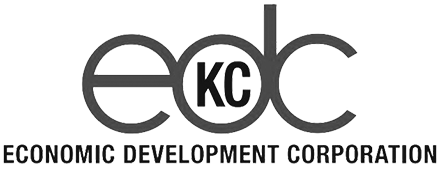Editor’s Note: This content is sponsored by Mid-Continent Public Library but independently produced by Startland News. For more on the tools discussed in this article, click here.
Imagine this.
Your wearable tech firm is thriving — so much, in fact, that you need an injection of investment capital to maintain sustainable growth. You’ve booked some pitches with investors who want to know not only how your firm is performing and details on your team, but they also request data supporting how huge an opportunity this really is.
How big is your market? How fast is this market growing? Who are your competitors and how have they performed?
It’s all important data for a compelling pitch — but what also matters is how deep you can drill into that data, said Kansas City investor John Fein.
“Showing a huge market isn’t enough,” said Fein, who’s managing director of Firebrand Ventures. “Founders need to segment their market in an educated way and describe what segment they will dominate first and how. They need to show why their market desperately needs their product and why their product is much better than other solutions.”
Finding such data can not only be difficult but also time-consuming. Resources like the Mid-Continent Public Library offer a shortcut.
Through MCPL’s Square One Small Business Services, patrons can dive deep into market demographics, industry statistics, business model analysis, economic trends and much more.
“These research tools can help clear up uncertainty in a number of ways,” said MCPL business librarian Kelly Head. “One can get a glimpse of the future through industry forecasts and predictions. Figuring out who your market is and where they are located can help you determine market size and where to locate. Researching competitors can help determine your market niche and what you do better than anyone else.”
In addition to providing such tools as DemographicsNow, Statista and ReferenceUSA, MCPL exerts are available to offer 1-on-1 help, Head added. They’ll even travel to a library branch near you to walk through how to use the databases and point you toward the resources you need to help your business.
Returning to the hypothetical wearable tech firm, Head helped navigate MCPL’s tools to find what real-world investors want to see in the imaginary startup’s pitch.
He first consulted Statista, an online statistics, market research and business intelligence portal that provides market data, analysts’ opinions, as well as industry analysis and government research. (While the tool doesn’t require a person to step foot into a library, you must create an account to access it.)
Knowing the wearable firm’s overall market size would be of top importance, said Firebrand Venture’s Fein.
So let’s take a look deeper: In 2016, the wearables market reached $16.07 billion, according to Tractica, a market research firm. That figure is expected to swell to $26.43 billion in 2018 and nearly $60 billion in 2021.
The overall market size, however, isn’t enough, Fein said. He also wanted to see segments and how the business would to attack them.
Back to Statista: Searching the keyword “fitness tracker,” Head finds that the total market for fitness wearables in 2016 reached $2.49 billion, according to Tractica. It’s expected to reach $2.57 billion in 2018 and $3.1 billion in 2021.
To provide further context, Head narrows in on the demographics and behavior of the region in which the company would first roll out its product. About 75 percent of Missourians and 76.5 percent of Kansans report being physically active, ranking them as the 33rd and 28th least-active states in the U.S., respectively.
Another important component of what investors are looking for is an analysis of competitors. It so happens that the hypothetical wearable company already has several competitors — and they’re big ones.
FitBit had snagged about 47 percent of the fitness tracker market in 2016, according to Yole Développement, a tech market research firm. That’s followed by China-based Xiaomi with 27 percent market-share, and Jawbone with 2 percent.
While Fein and many other investors emphasize other key factors — revenue, traction with paying customers, and a roadmap — can be more important in a pitch, market data remains a critical component. For more information on how to excavate such information on your firm’s market, reach out the MCPL team here or visit one of its more than 30 locations.






































